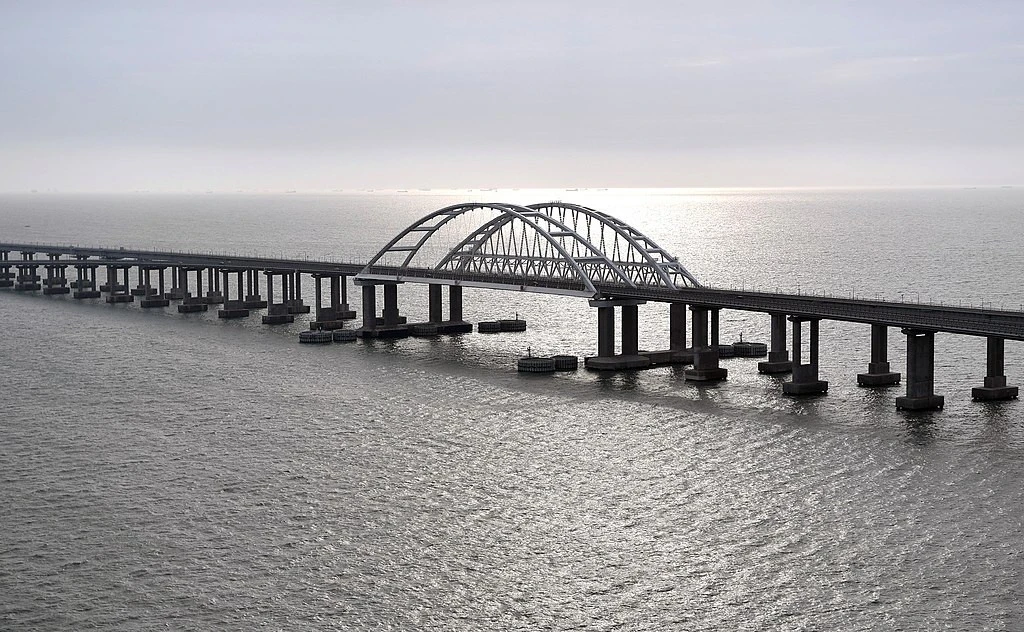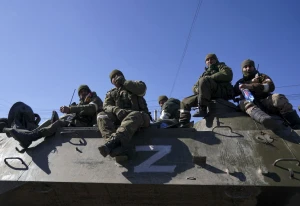
Last week's explosions in Russia: over 150 UAVs per day, fire at Moscow oil refinery, blasts in Crimea
Last week saw numerous drones flying over Russia, a massive fire breaking out at a refinery in Moscow, and explosions reported in the occupied Crimea
Read more about the explosions in Russia and the temporarily occupied territories in Espreso's weekly review.
Explosions at an oil refinery in Omsk, at oil depots in the Voronezh and Rostov regions, and a major fire in Moscow
On Monday, August 26, a powerful explosion occurred at the Gazpromneft-ONPZ oil refinery in Omsk. Witnesses reported hearing the explosion in several districts of the city. Later, the media reported that two people were allegedly injured in the blast. The fire covered an area of 1,000 square meters, but no evacuation of the plant was conducted. However, it was later reported that the fire was brought under control.
Meanwhile, in Kursk, on the morning of August 27, there were complaints of a drone attack, resulting in some "minor" damage in the city. "In Kursk, our air defense repelled attacks by Ukrainian drones. There are a few minor damages, and a fire broke out on a dacha plot," said the mayor of Kursk.
In the early hours of August 28, Russian authorities reported a drone attack on an oil depot in the Rostov region, where a fire broke out. At the same time, in the Voronezh region, an evacuation was ordered in two settlements due to the threat of detonation of "explosive objects" at another oil depot. The governor of the Rostov region stated that around 03:00 a.m., four drones were allegedly shot down in the area. Preliminary reports indicated no casualties, but in the Kamensky district, a fire broke out at a fuel storage facility following a drone attack. "There are no casualties. Emergency response teams are involved in extinguishing the fire. There is no threat of the fire spreading to residential buildings," he noted. The governor of the Voronezh region reported that Russian air defense forces detected and destroyed a drone of the aircraft type in the Rossoshansky district. There were no casualties or damage, according to the governor. He mentioned that falling drone fragments caused a fire near explosive objects, but there was no detonation. However, Russian emergency services announced a temporary evacuation of residents from two settlements, according to Gusev. He added that the fire was allegedly extinguished by local forces, and the situation had stabilized, with residents returning to their homes. At 10:00 a.m., the governor of the Kirov region reported a drone strike in the city of Kotelnich. "A few minutes ago, a drone struck Kotelnich. The drone attacked a storage tank for petroleum products. There are no casualties. There is no fire. The situation is under control," he wrote. Meanwhile, local Telegram channels published photos and videos of a large fire at an oil depot in the Kamensky district and another in the town of Proletarsk.
Later, it was reported that on the night of August 28, Ukrainian forces struck the Atlas oil depot in the Rostov region of Russia. The Zenit oil depot in the Kirov region and an ammunition depot were also affected. "On the night of August 28, a strike was carried out on the Atlas oil depot in the Rostov region of Russia. As a result of the impact, a fire broke out in the area of the vertical tanks of the facility. Fire trains were reportedly involved in extinguishing the fire," the report stated. It was noted that the Ukrainian Defense Forces also struck the Zenit oil depot in the Kirov region and the field artillery depot of the Russian Zapad military group in the Voronezh region. Satellite images that surfaced online showed the burning tanks at the Atlas oil depot. The images revealed that two fuel tanks were engulfed in flames, with signs of damage on several others.
On the evening of Friday, August 30, Russia reported the downing of "aerial targets" over Belgorod and the surrounding district. As a result of falling debris, five people were allegedly killed, and 37 were injured. "Our air defense system worked over Belgorod and the Belgorod district – several aerial targets were shot down on approach to the city. Unfortunately, one person died after a shell directly hit a car," the regional governor initially stated. He also claimed that in the Belgorod district, two private houses were on fire in the village of Dubove. Later, Gladkov clarified that the death toll had risen to five, with 37 injured.
After a drone attack on the night of September 1, a fire broke out at the Moscow Oil Refinery in Kapotnya and the Kashirskaya Power Station. In the Tver region, the Konakovskaya Power Station caught fire following a drone attack. The Russian Defense Ministry reported that 46 drones were intercepted and destroyed over the Kursk region during the night, 34 over the Bryansk region, 28 over the Voronezh region, 14 over the Belgorod region, eight over the Ryazan region, two over Moscow, seven over the Moscow region, five over the Kaluga region, four over the Lipetsk region, three over the Tula region, two each over the Tambov and Smolensk regions, and one each over the Oryol, Tver, and Ivanovo regions. Later, a Russian Telegram channel, Astra, posted footage of a burning flare at the Kapotnya refinery (in the Moscow region), which had been targeted by a drone attack. It was noted that residents had seen such a "fire pillar" before, but after the drone attack, the "torch is burning more intensely." The fire at the Kapotnya refinery was initially given the highest complexity level, TASS reported, citing emergency services. However, within minutes, the fire's complexity level was reportedly reduced from the fifth, highest, to the second. The fire was extinguished using helicopters. No information about casualties has been reported. In the Tver region of Russia, a fire broke out at the Konakovskaya Condensing Power Station after a drone attack. A total of five drones were shot down by air defense forces over the Tver region, the governor said. He later announced that the fire caused by the drone attack on the Konakovsky district had been localized. However, local media showed footage of a major fire at the Konakovskaya Power Station. According to eyewitnesses, the fire started after the drone attack.
Explosions in the temporarily occupied Crimea
In the early hours of Thursday, August 29, the Russian-installed authorities in Crimea reported an alleged drone attack on Sevastopol, prompting a temporary closure of the Crimean Bridge by Russian forces. "In Sevastopol, the military is repelling an attack by the Ukrainian Armed Forces, and air defense systems are active. According to preliminary information, two drones have already been shot down over the sea," wrote Razvozhaev. He claimed that there were no casualties or damage. Meanwhile, the Crimean Bridge Information Center reported that as of 03:47 a.m., traffic on the bridge had been temporarily halted.
Later, in the early hours of Friday, August 30, explosions were reported near the city of Dzhankoi and in the area of the Kirovske military airfield in temporarily occupied Crimea. Eyewitnesses reported hearing four explosions over Kirovske that night, with three occurring near the airfield and one over the local railway station. Another explosion was heard in the Dzhankoi area.
Shortly afterward, Russian sources complained that during the night of Friday, August 30, three of their regions, along with the temporarily occupied territory of Crimea, were subjected to drone attacks. According to them, air defense systems were activated. Reportedly, a total of 18 drones were shot down that night. Specifically, 11 drones were allegedly shot down over the Bryansk region, four over the Kaluga region, two over occupied Crimea, and one over the Belgorod region.

Photo: Wikipedia
Expert opinions
Journalist Vitaly Portnikov believes that with each raid by Ukrainian drones, the capabilities of Russian oil depots and refineries diminish, which in turn reduces the Russian budget's revenues and consequently the capabilities of the Russian armed forces.
"It's well known that Russia's economy, especially after the imposition of serious Western sanctions, is largely dependent on oil. Without revenues from the oil and gas sector, Vladimir Putin will not be able to continue the war against Ukraine. The Russian leader and his close circle will inevitably have to consider, if not stopping, then at least pausing this war in the coming years. Therefore, every strike on Russian refineries and oil depots brings us closer to the end of the war," Portnikov emphasizes.
Meanwhile, the Institute for the Study of War (ISW) explains the importance of the U.S. authorization for Ukraine to strike Russia with long-range weapons, noting that within the range of ATACMS (Army Tactical Missile System), there are 245 Russian military targets.
"The redeployment of Russian aircraft from 16 Russian air bases in range of ATACMS does not reduce the importance of allowing Ukraine to use ATACMS against hundreds of other Russian military objects, however, nor does the reportedly small number of ATACMS the U.S. has provided," the ISW military experts underline.
- News












































